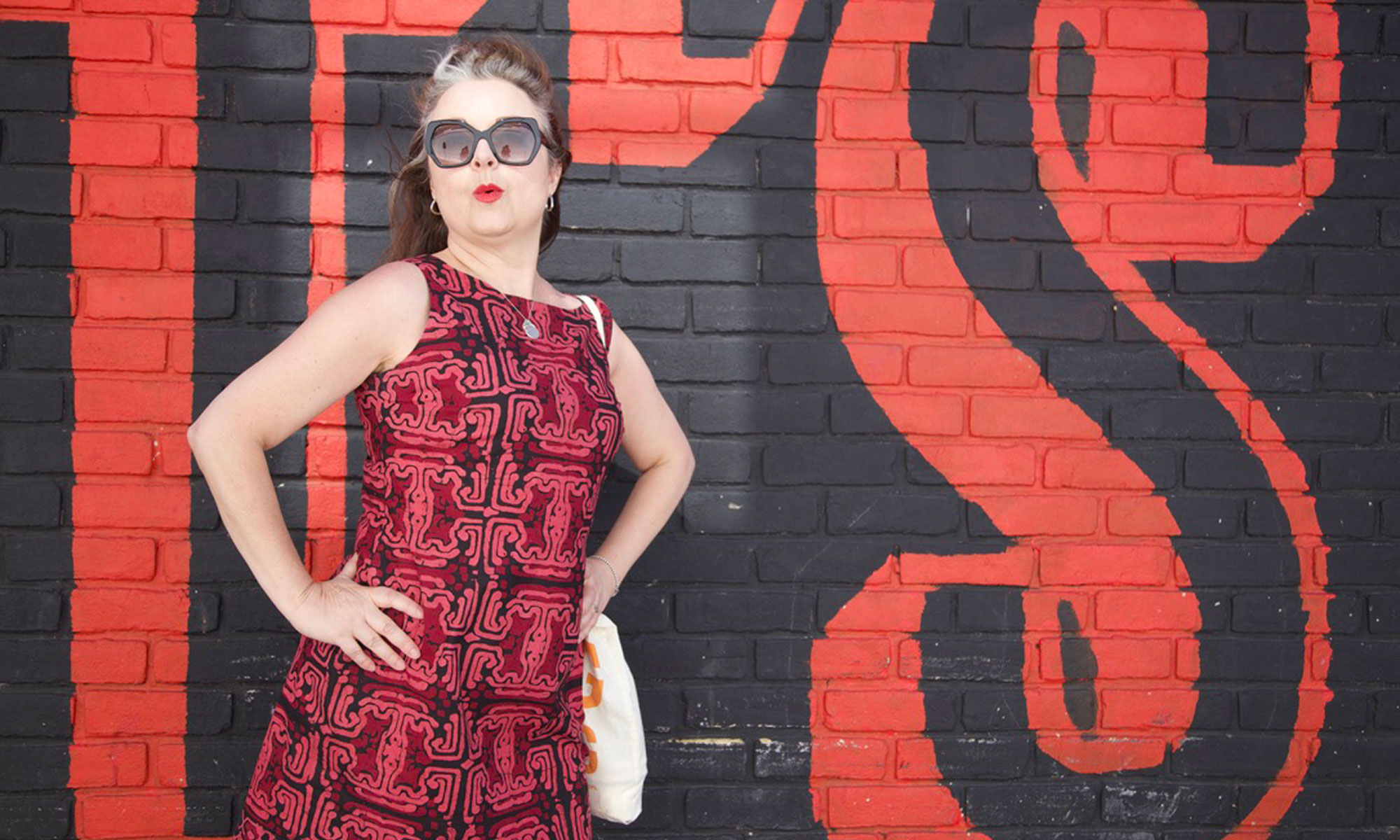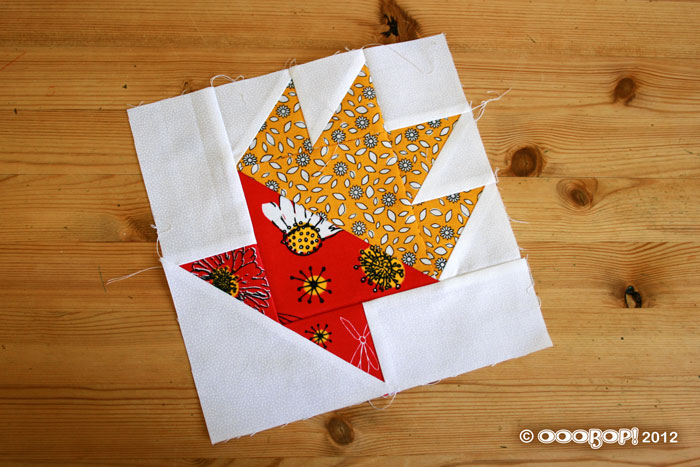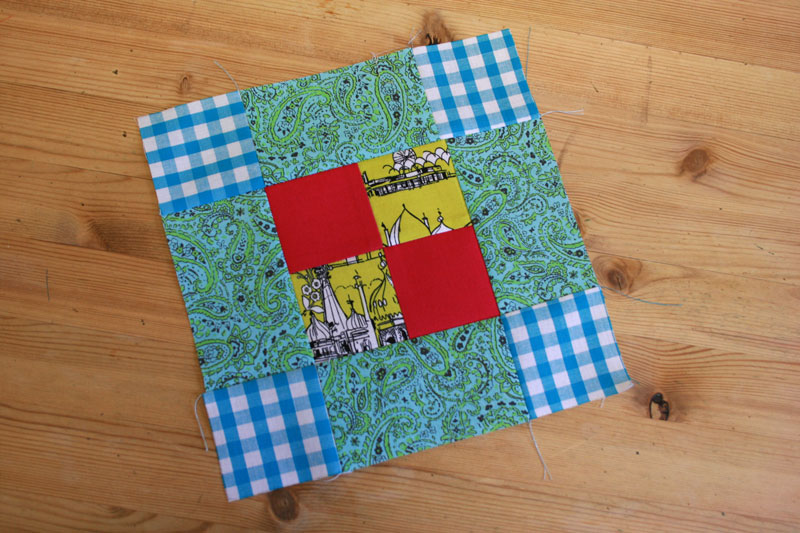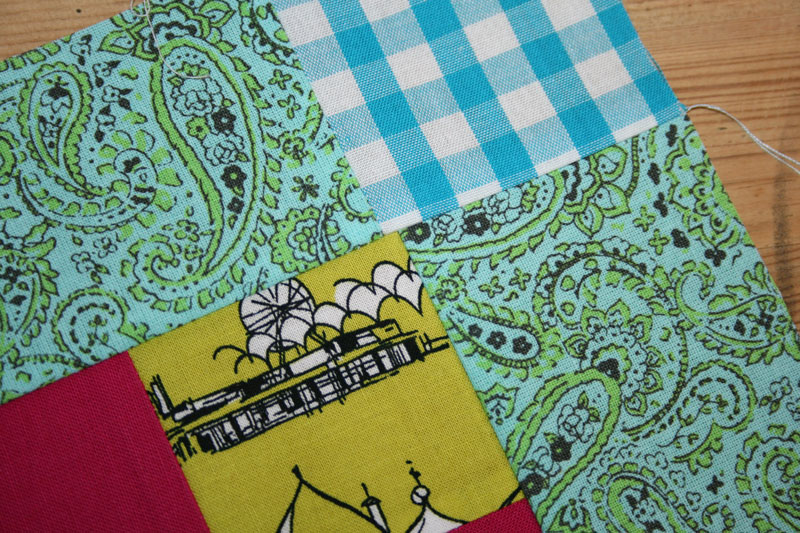So here is block 9, The Cactus Pot. Apparently very popular in the 1930’s but, despite it’s Art Deco appearance, it actually dates back to the quilts of the 1800s. If the colour balance is altered it becomes more ‘Basket’ or ‘Cake Stand’!
I really like the fabric choice on this one. And with its white background, to be bordered by white, this little cactus is sure to be a pretty thorn among the ‘roses’!
I didn’t have too much trouble putting it together. I just took my time and repeatedly thanked my quarter inch foot! The small triangles were pieced together first, forming squares. Two sets of these were joined to make 2 rectangles. The first of these rectangles was sewn to the diagonal of the large yellow print triangle. A small white square was sewn to the second of the ‘rectangles’ to make a longer rectangle and this was then joined to the other diagonal of the triangle (and the edge of the first made rectangle)
Next up, the large red print triangle was joined to the yellow large yellow print triangle edge. Then the two small red print triangles were sewn to the short edge of the white rectangles. These were then joined to the sides of the block to create a ‘base’ to the pot. The last piece to be added was the large white triangle, across the bottom of the ‘base’.
Lots of pressing in between, and lots of satisfaction when this one was complete!
Block Facts:
Name: Cactus Pot block
History: The block was first published under this name in America, in the Oklaholma Farmer Stockman magazine in 1930. Also known as the Flower Pot.
Level: Some experience necessary for accurate piecing
No. of pieces:16
Progress report:
Block 1: The Double Four Patch
Block 2: The Whirlwind
Block 3: The Sailboat
Block 4: The Shoo-fly
Block 5: The Trafalgar
Block 6: The Windmill
Block 7: The Chequer Square
Block 8: The Diamond Square
Block 9: The Cactus Pot






